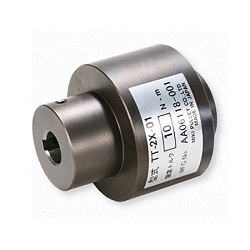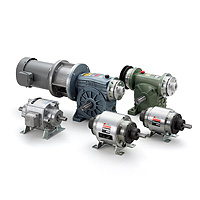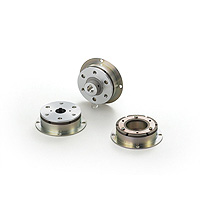Clutches, Brakes(Rated Torque (Range):60.1 to 200)
| Shipping Days |
|
|---|
?* Information on days to ship and prices
-
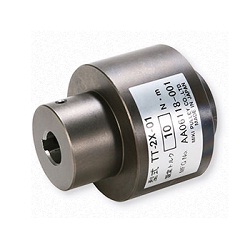
Torque Limiter TT-01 Type (2-Axis Butt Type)
MIKI PULLEY
Securely detect overloads
Precise operation to protect machinery from overloads
Instantaneous input and output disconnection upon overload to protect machinery. Because the interlocking type system is single-position,
removing the load automatically creates a connection with the same torque and at the same index position. Unlike a friction system,
accommodates even poor conditions.
Applications: Semiconductor manufacturing equipment, fiber equipment, printing equipment
TT-□-01 Type
2-axis butt type with 2 shafts inserted from both ends of the torque tender (housing and hub) and both shafts fixed with set screws to protect machinery from power transmission and overloads.
As a 2-axis butt type, this can also be used as a flexible coupling.- Volume Discount
Configure nowStarting from∗ : 563.72 € Min. Shipping Days : 35 Days *Unit price with basic configuration
-
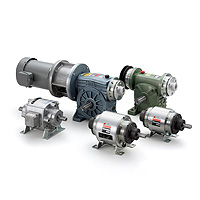
Electromagnetic Clutch / Brake Unit
MIKI PULLEY
Multiple clutches and brakes can be used when design complex mechanisms. This already includes clutch and brake units that can obtain the required operation through combining each of these.- 2D CAD data available
Configure nowStarting from∗ : 2,573.03 € Min. Shipping Days : 31 Days *Unit price with basic configuration
-
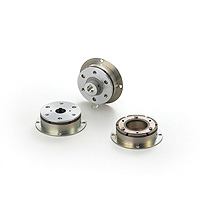
Excitation-actuated Brake
MIKI PULLEY
A brake that is compatible with all types of general industrial machinery. The logical design that is powerful in withstanding sudden load stops and has an exceptional level for all of the performance such as torque properties and responsiveness required for the brake.
[Features]
· A brake with a thin design.
· Has the same exceptional performance as the clutch, particularly exceptional responsiveness, and is powerful in withstanding sudden load stops.
· You can select a model that has a shape that matches the mounting area and it is lightweight, which makes it easy to install on any device.
· There are three differing types of mounting shapes for armature assembly so that you can select the most appropriate one.- 2D CAD data available
Configure nowStarting from∗ : 843.69 € Min. Shipping Days : 31 Days *Unit price with basic configuration
-

Torque Limiter TT-03 Type (Wrapping Type)
MIKI PULLEY
Securely detect overloads
Precise operation to protect machinery from overloads
Instantaneous input and output disconnection upon overload to protect machinery. Because the interlocking type system is single-position,
removing the load automatically creates a connection with the same torque and at the same index position. Unlike a friction system,
accommodates even poor conditions.
Applications: Semiconductor manufacturing equipment, fiber equipment, printing equipment
TT-□-03 Type
Wrapping type with a shaft inserted in the inner diameter (hub) of the torque tender and a pulley, sprocket, gear, etc. mounted in the outer diameter part of the housing
to protect the machinery from power transmission and overloads.
Shaft fixing is configured in the center of the main body to ensure full mounting even of shaft ends that cannot be configured, such as on through shafts.- Volume Discount
Configure nowStarting from∗ : 675.03 € Min. Shipping Days : 35 Days *Unit price with basic configuration
| Brand |
|---|
| Product Series |
| CAD |
| Starting from∗ |
| Min. Shipping Days |
| Function |
| Type |
| Operating Condition |
| Max. Operating Rotational Speed(rpm) |
| Rated Torque (Range)(N・m) |
| Brand | MIKI PULLEY | MIKI PULLEY | MIKI PULLEY | MIKI PULLEY |
|---|---|---|---|---|
| Product Series | ||||
| CAD |
|
| ||
| Starting from∗ | 563.72 € *Unit price with basic configuration | 2,573.03 € *Unit price with basic configuration | 843.69 € *Unit price with basic configuration | 675.03 € *Unit price with basic configuration |
| Min. Shipping Days | 35 Days | 31 Days | 31 Days | 35 Days |
| Function | Limiter | Clutch and Brake Unit / Double Clutch Unit / Double Clutch, Brake Unit | Brake | Limiter |
| Type | Machine | Single Plate Electromagnetic | Single Plate Electromagnetic | Machine |
| Operating Condition | Dry | Dry | Dry | Dry |
| Max. Operating Rotational Speed(rpm) | - | 2500 ~ 3000 | 2500 ~ 3000 | - |
| Rated Torque (Range)(N・m) | 60.1 to 200 | 60.1 to 200 | 60.1 to 200 | 60.1 to 200 |
Loading...
Filter by:
-
Function
- Clutch
- Brake
- Clutch and Brake Unit
- Double Clutch Unit
- Double Clutch, Brake Unit
- Power Supply Units
- Limiter
-
Type
-
Operating Condition
-
Max. Operating Rotational Speed(rpm)
-
Rated Torque (Range)(N・m)
Brand
-
- MIKI PULLEY (4)
- VMA (0)
- MIGHTY (0)
- KBK (0)
CAD data type
-
- 2D
- 3D




